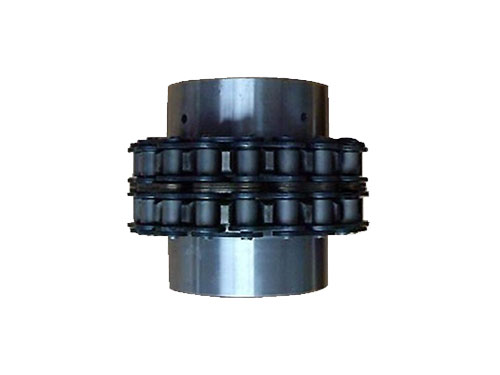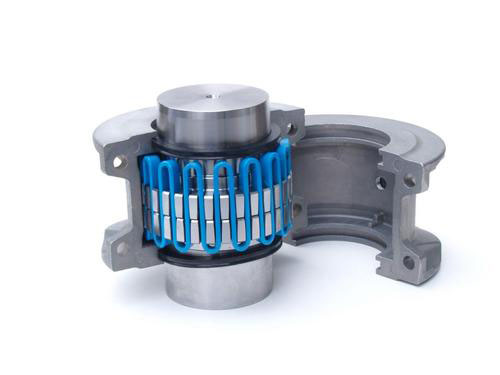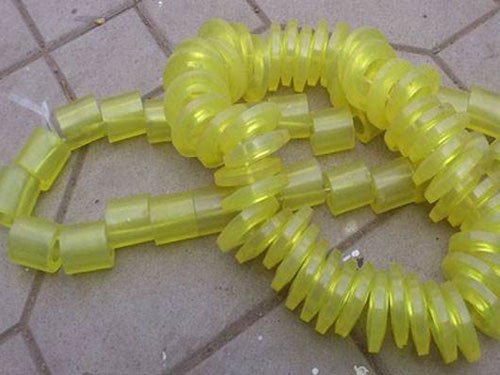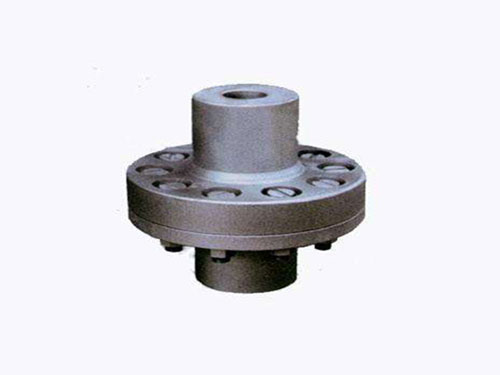 JSZ type brake wheel couplingThe structure of JSZ type brake wheel coupling...
JSZ type brake wheel couplingThe structure of JSZ type brake wheel coupling... GLF roller chain couplingGLF roller chain coupling is suitable for hydraulic machinery...
GLF roller chain couplingGLF roller chain coupling is suitable for hydraulic machinery... Serpentine spring couplingThe serpentine spring coupling is divided into one...
Serpentine spring couplingThe serpentine spring coupling is divided into one... Elastic sleeveThe elastic sleeve uses a number of non-metal elastic...
Elastic sleeveThe elastic sleeve uses a number of non-metal elastic... Elastic sleeve pin coupling for pumpElastic sleeve pin coupling for pump: 1. Elastic...
Elastic sleeve pin coupling for pumpElastic sleeve pin coupling for pump: 1. Elastic...Three commonly used alignment methods for elastic pin couplings
Among the couplings, only the flexible coupling has the performance of compensating the relative displacement of the two shafts. Therefore, a large number of flexible couplings are selected in practical applications.Rigid couplings do not have compensatory application range and are limited, so the amount is very small.Universal couplings should be used for shafting transmissions with large angular displacement; for shafting transmissions with axial movement and need to control axial displacement, diaphragm couplings should be used; only those with high alignment accuracy Rigid coupling is selected only below.Under normal circumstances, the relative displacement of the two shafts of the coupling is unavoidable, but the balance displacement direction, axial, radial angular direction and displacement amount produced by the shafting transmission under different working conditions are different.The two shafts connected by the coupling produce relative displacement due to many factors such as manufacturing error, assembly error, installation error, shaft load and deformation, base deformation, bearing wear, temperature change, and relative movement between components.Flexible pin coupling manufacturers have learned that couplings are now more and more used in machine tools and semiconductor system manufacturing machinery, which are controlled by servo systems.In these fields, unlike general manufacturing machinery, the coupling requires a high degree of followability of its output relative to its input.
Three commonly used alignment methods for elastic pin couplings
1. Coupling axial alignment: alignment in the horizontal direction does not need to calculate the amount of front and rear feet of the movable end, clear the axial and radial dial gauges at 1 o'clock, and read the axial and diameter at 3 o'clock. Read on the dial gauge and tap the movable end with a copper rod to adjust the axis.First observe the reading of the axial dial gauge, tap the front and rear feet of the movable end with a copper rod, and adjust the axial reading at 3 o'clock to half of the original.Observe the reading of the radial dial gauge, tap the middle of the movable end with a copper rod, and adjust the radial reading at 3 o'clock to half of the original.This requires repeated adjustments.The adjustment result should make the sum within the allowable error range.
2. Radial alignment of the coupling: When the coupling is aligned, it should be adjusted in the vertical direction.The thickness of the front and rear foot pads can be calculated from the three-point detection data, and the offset of the two shafts can be detected.The diameter of the outer edge of the movable end coupling plus the distance from the outer edge of the coupling to the center of the axial dial gauge rod hole; the distance from the end face of the movable end coupling to the center of the front foot bolt of the movable end; the front of the movable end, The distance from the center of the rear foot bolt.From the above data, the thickness of the front and rear foot pads can be known.If the motor is higher than the fixed end, shims should be reduced; if the motor is lower than the fixed end, shims should be added.After adjusting the vertical direction, the detection data of each point has changed, it should be reset at the 1 point position again, and the data of 2 and 3 points should be measured again.After adjustment, you only need to check whether the sum is within the allowable error range.
3. Alignment of the coupling principle: the projection of the movable end face circle of the motor on the fixed end face is approximately regarded as a perfect circle, because the distance from the center of the movable end to the fixed end face remains unchanged.If you want to achieve it at the same time, the axis of the movable end and the axis of the fixed end are on the same line, which is just an ideal alignment state.In actual alignment, set the allowable error first, and when the error generated during alignment is within the allowable error range, alignment ends.In many occasions, the lower detection point of the pump cannot be detected, and the alignment work cannot be performed.
In the past, people only considered the elastic pin coupling as a mechanical component. However, with the diversification of the use of the mechanical device using the coupling, in order to achieve higher performance, the familiarity with the coupling has been changed from A single mechanical part is transformed into an important mechanical element that can influence the function of the entire mechanical system.The load category of the old-fashioned system is the basic basis for selecting the type of coupling.For working loads with large changes in impact, vibration and transmission, flexible couplings with elastic elements, that is, elastic couplings, should be selected to buffer, reduce vibration, compensate for axis deviation, and improve the performance of the transmission system.The outer dimensions of the coupling, that is, the large radial and axial dimensions, are within the allowable installation space of the machine and equipment.Choose a coupling that is convenient for assembly and disassembly, does not require maintenance, has a long maintenance period or is convenient for maintenance, does not need to move the two shafts when changing wearing parts, and is easy to adjust the center.